How to Grow Your Own Persimmons
Japanese or Asian persimmons (Diospyros kaki) shine in the fall, but there are more reasons to consider these fruit trees for your garden. They’re not too tall, usually reaching about 30 feet in height and spread, and can be espaliered to take up less room. Their light green leaves turn yellow and red in fall even in warmer climates. And after the leaves drop, you’ll still have the fruit as a garden accent — it can stay on the tree until winter.
Persimmons are hardy to zone 6, but don’t despair if you live in a colder climate. Native American persimmons (Diospyros virginiana) can be grown down to zone 4, and also do well in more humid areas. These tend to be a bit smaller than Japanese persimmons. There are also a growing number of hybrids, bred to combine the hardiness of the American persimmon with the sweetness of the Japanese.
All types of persimmons require very little specialized care and are fairly immune to the problems and pests that can plague other fruit trees.
There are two commonly available types. Astringent, or soft, persimmons (including American, hybrids and many of the Japanese) are incredibly tart until they are completely mushy, like a soft jelly; then they’re wonderfully sweet and ideal for baking. Nonastringent, or hard, persimmons are still firm when they’re ripe, and are great for eating fresh.
Some persimmons self-fertilize, some require a pollenizer, and some will set fruit without a second tree, but the fruit will be tastier if you have a pollenizer nearby. Check before you buy. Also, while there are some dwarf persimmon varieties, you can easily prune standard trees to keep them in bounds.
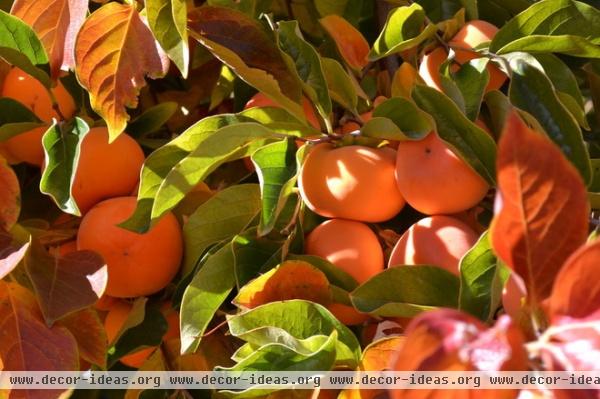
Where to grow: Grow Japanese persimmons in USDA zones 6 to 10 (find your zone) and American and hybrid persimmons in zones 4 to 10.
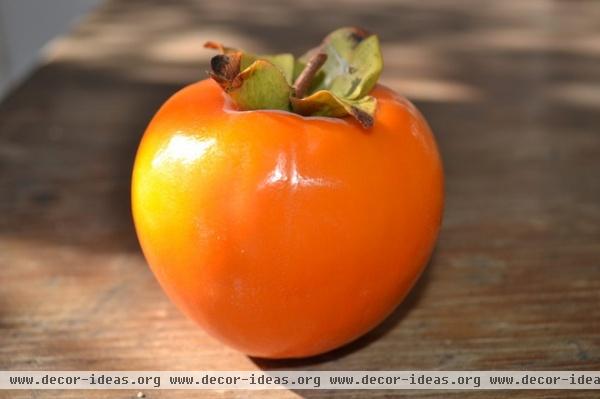
Favorite Japanese astringent persimmons: Hachiya, Saijo, Sheng, Tamopan, Taneashi
Favorite Japanese nonastringent persimmons: Early Fuyu, Fuyu, Giant Fuyu (Gosho), Izu, Jiro (Apple Persimmon), Maru, Nishimura Wase (Coffee Cake)
Favorite American and hybrid persimmons: Early Golden, John Rick, Meader, Nikita’s Gift, Ruby, Russian Beauty, Szukis
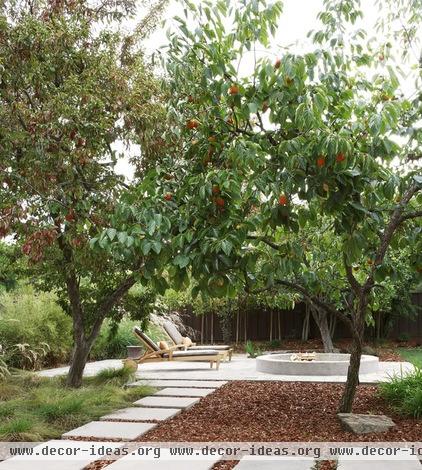
Planting guidelines: Plant bare-root persimmons in the spring, once the soil can be worked. Container-grown persimmons can be planted almost year round, although you should avoid the hottest summer months. Don’t be surprised by the black roots; that’s their natural color.
Japanese persimmons prefer full sun, while American and hybrid persimmons can take some shade. Well-drained soil is always preferred, but persimmons, especially the Japanese, are very tolerant of different soils. American persimmons have a long taproot, so the soil should be loose.
How to plant: For bare-root plants, dig a planting hole that is about the same depth as the roots and twice as wide. Create a cone in the middle of the hole that is tall enough that the crown of the tree will sit just above the soil line. Scruff up the sides of the hole to encourage roots to spread. Set the tree in place, spreading the roots out around the cone, and fill with soil.
For container-grown plants, dig a planting hole as deep as the root ball and twice as wide, then create a small shelf about an inch or two deep on the bottom of the hole. Scruff up the sides, then place the plant in the hole and spread the roots out. Fill in with soil and create a small watering berm around the outside of the hole.
After planting, prune to remove wayward branches and shape the tree. Water deeply and add mulch, keeping it at least 3 inches away from the trunk.
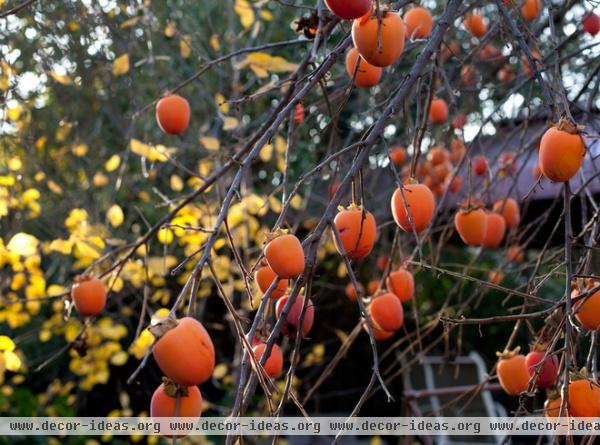
Care Requirements for Persimmons
Persimmons are sturdy and one of the easier fruit trees to care for. You’ll need to do some work, but they aren’t nearly as fussy or problem-prone as some of the more popular fruits. Your most likely problem, especially the first few years, is fruit drop on Japanese persimmons. Correct this by watering consistently and not overfeeding.
Watering: Japanese persimmons are fairly drought tolerant, but you’ll get better fruit if you water at least every few weeks. Don’t overwater; the soil should be somewhat (though not completely) dry before you water again. American and hybrid persimmons benefit from a regular watering schedule.
Feeding: Fertilize Japanese persimmons in late winter or early spring, as soon as you can work the soil. Feed American and hybrid persimmons only if they aren’t growing well. Often you’ll just need to apply organic mulch to get them back on track.
Thinning: If a young tree is overburdened with fruit at the expense of its overall growth, remove the excess. Otherwise, there’s no need to thin.
Pruning: Japanese persimmons should have either an open form, with no central trunk, or a modified center in which the trunk branches out near the top to form a vaselike shape. Prune the first few years to develop your preferred shape and remove any excessively long or thin branches. After that simply prune to maintain the shape; to remove diseased, dead or crossing wood; and to open up the canopy. Also remove any suckers around the base of the tree.
For American and hybrid persimmons, just remove any broken, diseased or dead branches and get rid of any suckers at the base of the tree.
Pests and diseases: Young trees may fall prey to gophers, and birds will be tempted by the fruit. In humid climates, such as the Southeast, anthracnose might be a problem, and wet conditions will encourage it. Keep the foliage as dry as possible and provide good air circulation. Remove and destroy affected branches.
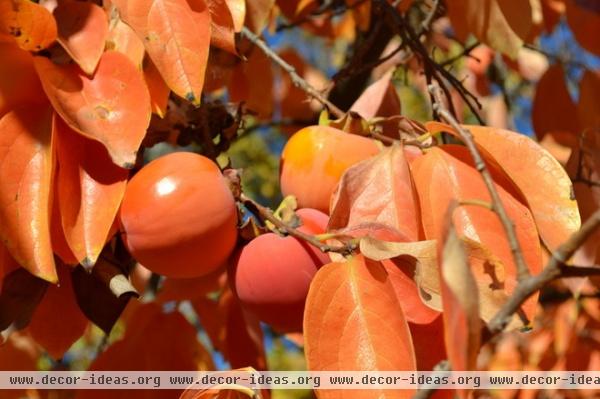
Harvesting: Persimmons are a fall crop; you’ll find fruit on the trees even after the leaves have fallen. Cut fruits high on the stem, so the collar and a part of the stem remain with the fruit.
Harvest astringent Japanese persimmons when they’re fully ripe in the fall, which means completely soft. If you need to pick them earlier, wait until the flesh is completely colored and let them continue to ripen indoors or in a cool spot until they reach the right level of softness.
Pick nonastringent persimmons when they’re ripe. Do a taste test and, for good measure, let them sit for a day or two before eating.
American persimmons ripen early in the fall, usually after the first good frost. They’re fully ripe when the skin is wrinkled and they’re fully soft. You may want to pick them a little earlier if the birds are eying them, but let them ripen fully before eating to avoid the tartness.
Your turn: Do you grow persimmons? Please tell us in the Comments which variety does well where you live.












